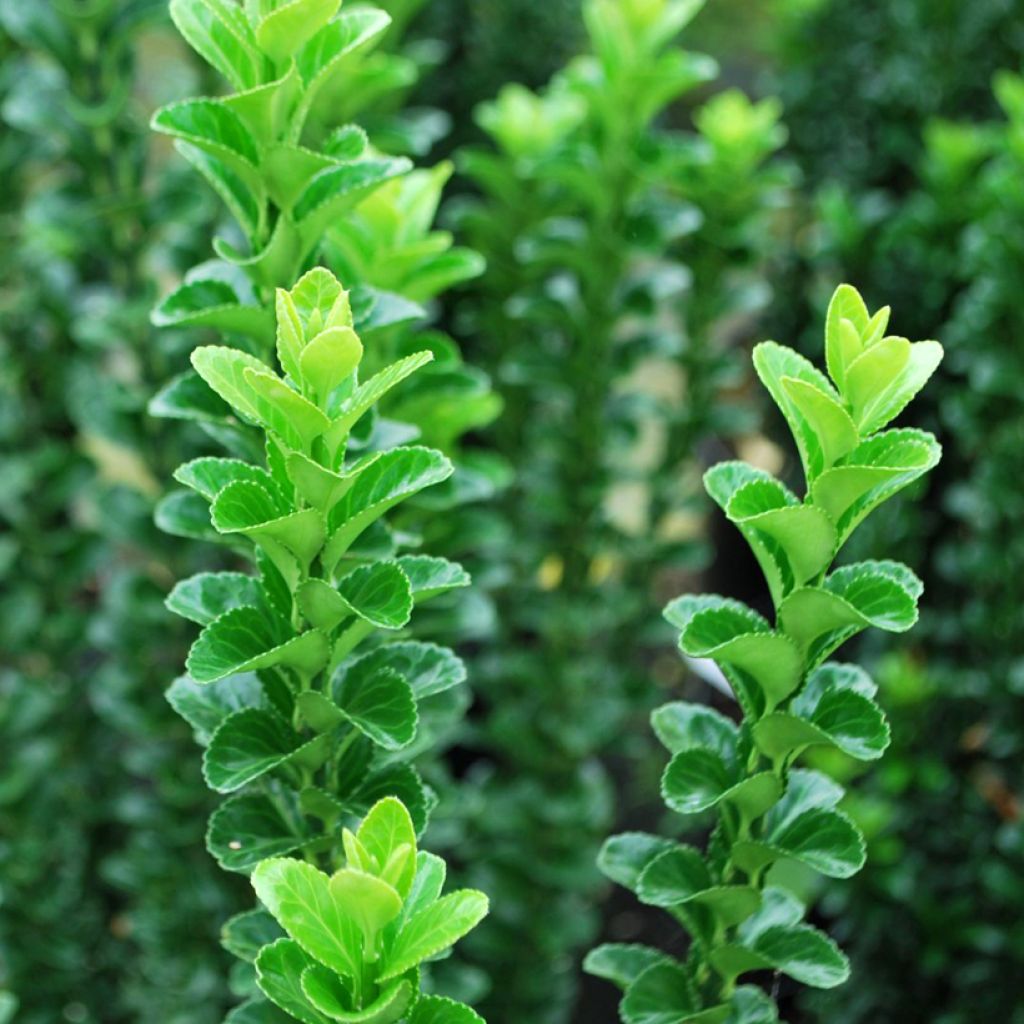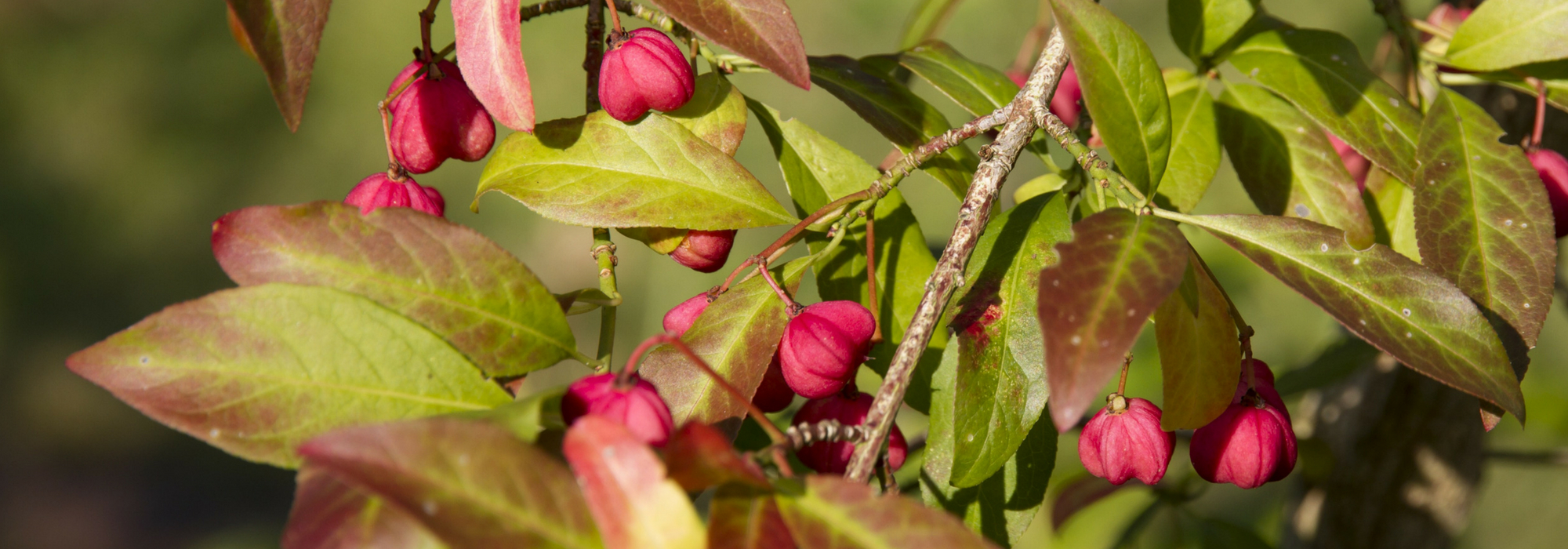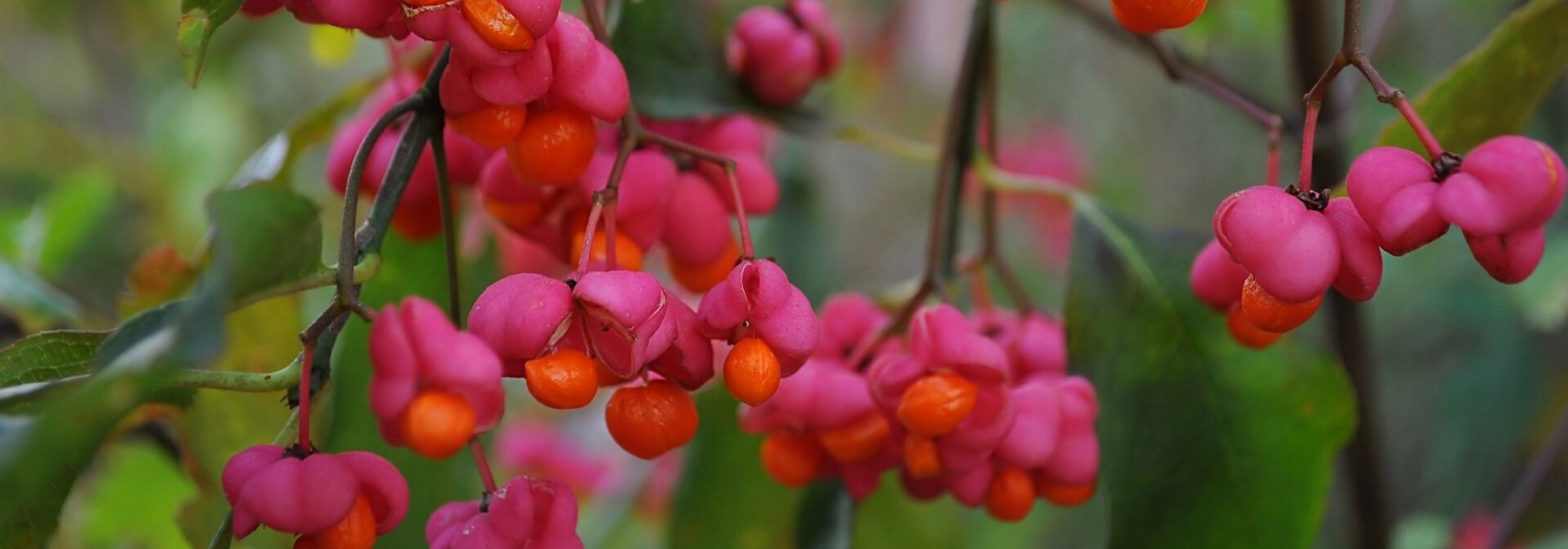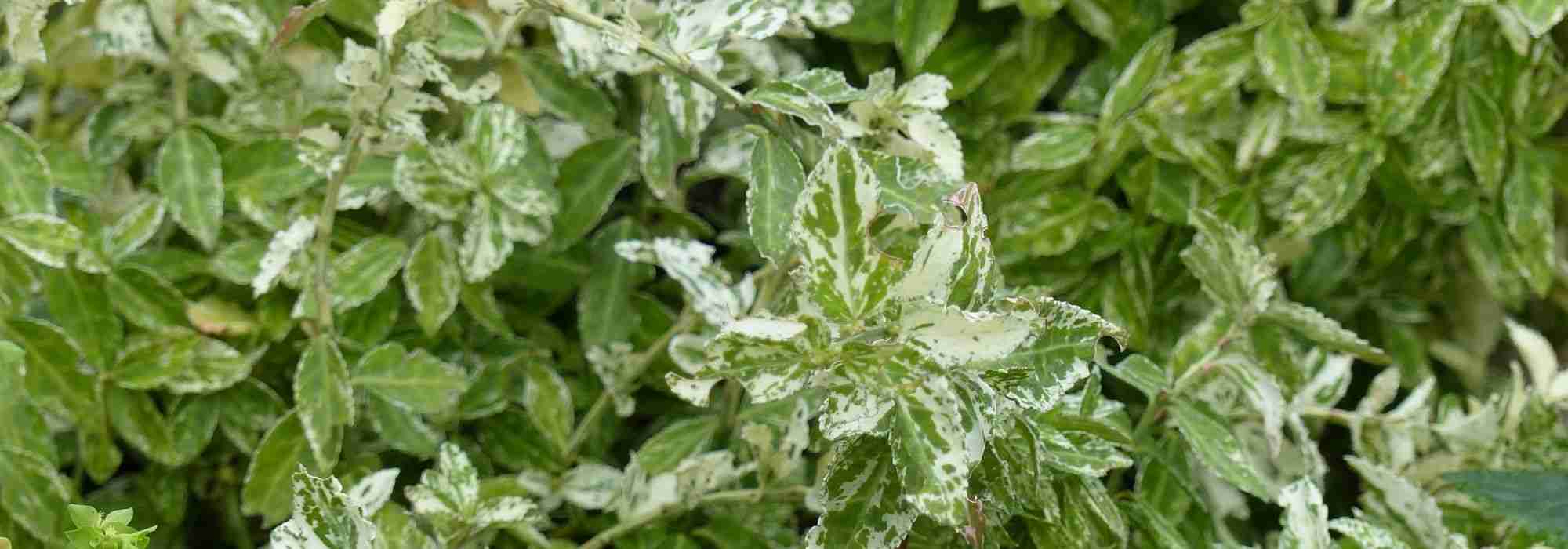

Euonymus japonicus Green Rocket - Japanese Spindle


Euonymus japonicus Green Rocket - Japanese Spindle
Euonymus japonicus Green Rocket - Japanese Spindle
Euonymus japonicus Green Rocket
Japanese spindle, Evergreen spindle, Japanese euonymus
Special offer!
Receive a €20 voucher for any order over €90 (excluding delivery costs, credit notes, and plastic-free options)!
1- Add your favorite plants to your cart.
2- Once you have reached €90, confirm your order (you can even choose the delivery date!).
3- As soon as your order is shipped, you will receive an email containing your voucher code, valid for 3 months (90 days).
Your voucher is unique and can only be used once, for any order with a minimum value of €20, excluding delivery costs.
Can be combined with other current offers, non-divisible and non-refundable.
Home or relay delivery (depending on size and destination)
Schedule delivery date,
and select date in basket
This plant carries a 24 months recovery warranty
More information
We guarantee the quality of our plants for a full growing cycle, and will replace at our expense any plant that fails to recover under normal climatic and planting conditions.
Would this plant suit my garden?
Set up your Plantfit profile →
Description
Euonymus japonicus 'Green Rocket' is a variety of Japanese Spindle easily recognised by its architectural silhouette. This small bush naturally has an upright and narrow habit, which is particularly highlighted by its small, glossy dark green leaves. Perfect for creating low hedges resistant to Boxwood pests, it is also valuable in mixed borders alongside flowering plants. It thrives in full sun or partial shade, in ordinary soil and similarly in pots on a terrace.
The Spindle belongs to the Celastraceae family, which is rich in 850 varied species, including trees, bushes, and climbers, from temperate to tropical climates, but is rather underrepresented in our gardens, with the exception of Celastrus, from which it derives its name. The Spindle (Euonymus) is an important member of this family, with over 170 species identified. Euonymus japonicus is native not only to Japan but also to China and Korea, where it grows in thickets and woods, particularly near the sea. It forms a bush or small tree 5 to 8 m high, flowering in June-July and fruiting in December-January. Introduced from southern Japan to Europe in 1804, it has been extensively planted, especially in urban settings, as it tolerates polluted atmospheres well.
'Green Rocket' is one of the most easily recognisable cultivars, with its narrow and upright silhouette. Discovered in Japan in 1978 by three botanists, it was eventually introduced to the market much later, around the year 2000. Of moderate growth, this compact bush reaches a height of 1 m and a width of 50 cm, sometimes more over time. It forms branches that grow vertically, with a somewhat stiff visual appearance but soft to the touch when young. As they age, they eventually turn woody and become rigid, changing colour from green to brown. Its habit is very dense, making it suitable for creating low hedges that can replace Boxwoods. The miniature leaves are elliptical and measure approximately 3 cm long. The edge of the leaf is finely toothed and glossy dark green on the surface, which makes it decorative throughout the season. The internodes are short, resulting in lots of leaves. When they emerge, the young shoots are a lighter green, creating a brief two-tone effect, as they darken afterwards. They are evergreen but they may partially fall to the ground in cases of intense cold, particularly if the plant has been pruned too late in the season, thus weakening it. In May-June, or even July, the bush produces insignificant greenish flowers, which have no real ornamental interest. They may sometimes yield a few pink fruits with orange arils at the end of the season. The aril is a fleshy covering surrounding the seed, which is toxic if ingested, so caution is advised!
Easy to cultivate in ordinary soil that is not too dry, growing in full sun or partial shade, it dislikes only severe frost or drought, Spindle 'Green Rocket' will be appreciated in small gardens for forming a low hedge, or in larger spaces, within an English mixed border or in a varied bed. Its compact dimensions and good tolerance to pruning also allow it to be sustainably grown in pots on a terrace or balcony, sheltered from cold winter drafts. You can interest your friends by planting alongside it 'Hedera helix 'Erecta', a bushy Ivy that is quite similar in appearance and size to it, and which tolerates more shade. These dark, glossy-leaved plants are perfect for highlighting light foliage or flowers planted nearby. A clump of Hosta 'Color Festival' with large bi-coloured leaves predominantly white-yellow will create a magnificent contrast of colour and dimensions. In the background, a specimen of Philadelphus coronarius 'Aureus', Golden Mock Orange, will also create a stunning scene.
Plant habit
Flowering
Foliage
Botanical data
Euonymus
japonicus
Green Rocket
Celastraceae
Japanese spindle, Evergreen spindle, Japanese euonymus
Cultivar or hybrid
Planting and care
Euonymus japonicus 'Green Rocket' is best planted in spring in well-drained soil, in a gently sunny or lightly shaded position. It prefers deep, humus-rich soils that remain moist, and tolerates the presence of limestone in the soil fairly well (pH range of 6 to 7.5). It is sensitive to severe frosts and is hardy down to approximately -12/-14°C. Hot and dry climates are not particularly suitable for this evergreen spindle tree, risking an invasion of mealybugs and sooty mould. Pruning is well tolerated between April and May. Caution: early spring pruning may harm the tender young shoots in the event of late frosts and excessive pruning can lead to the development of sooty mould, especially in very dry soil. Apply fertiliser twice a year, in early spring and autumn. In case of drought, water to maintain beautiful foliage. If the young plant is grown in a pot, it is necessary to change the growing substrate once a year in spring. Protect your pot if severe frosts are forecasted (< -5°C).
Planting period
Intended location
Care
Planting & care advice
This item has not been reviewed yet - be the first to leave a review about it.
Similar products
Haven't found what you were looking for?
Hardiness is the lowest winter temperature a plant can endure without suffering serious damage or even dying. However, hardiness is affected by location (a sheltered area, such as a patio), protection (winter cover) and soil type (hardiness is improved by well-drained soil).

Photo Sharing Terms & Conditions
In order to encourage gardeners to interact and share their experiences, Promesse de fleurs offers various media enabling content to be uploaded onto its Site - in particular via the ‘Photo sharing’ module.
The User agrees to refrain from:
- Posting any content that is illegal, prejudicial, insulting, racist, inciteful to hatred, revisionist, contrary to public decency, that infringes on privacy or on the privacy rights of third parties, in particular the publicity rights of persons and goods, intellectual property rights, or the right to privacy.
- Submitting content on behalf of a third party;
- Impersonate the identity of a third party and/or publish any personal information about a third party;
In general, the User undertakes to refrain from any unethical behaviour.
All Content (in particular text, comments, files, images, photos, videos, creative works, etc.), which may be subject to property or intellectual property rights, image or other private rights, shall remain the property of the User, subject to the limited rights granted by the terms of the licence granted by Promesse de fleurs as stated below. Users are at liberty to publish or not to publish such Content on the Site, notably via the ‘Photo Sharing’ facility, and accept that this Content shall be made public and freely accessible, notably on the Internet.
Users further acknowledge, undertake to have ,and guarantee that they hold all necessary rights and permissions to publish such material on the Site, in particular with regard to the legislation in force pertaining to any privacy, property, intellectual property, image, or contractual rights, or rights of any other nature. By publishing such Content on the Site, Users acknowledge accepting full liability as publishers of the Content within the meaning of the law, and grant Promesse de fleurs, free of charge, an inclusive, worldwide licence for the said Content for the entire duration of its publication, including all reproduction, representation, up/downloading, displaying, performing, transmission, and storage rights.
Users also grant permission for their name to be linked to the Content and accept that this link may not always be made available.
By engaging in posting material, Users consent to their Content becoming automatically accessible on the Internet, in particular on other sites and/or blogs and/or web pages of the Promesse de fleurs site, including in particular social pages and the Promesse de fleurs catalogue.
Users may secure the removal of entrusted content free of charge by issuing a simple request via our contact form.
The flowering period indicated on our website applies to countries and regions located in USDA zone 8 (France, the United Kingdom, Ireland, the Netherlands, etc.)
It will vary according to where you live:
- In zones 9 to 10 (Italy, Spain, Greece, etc.), flowering will occur about 2 to 4 weeks earlier.
- In zones 6 to 7 (Germany, Poland, Slovenia, and lower mountainous regions), flowering will be delayed by 2 to 3 weeks.
- In zone 5 (Central Europe, Scandinavia), blooming will be delayed by 3 to 5 weeks.
In temperate climates, pruning of spring-flowering shrubs (forsythia, spireas, etc.) should be done just after flowering.
Pruning of summer-flowering shrubs (Indian Lilac, Perovskia, etc.) can be done in winter or spring.
In cold regions as well as with frost-sensitive plants, avoid pruning too early when severe frosts may still occur.
The planting period indicated on our website applies to countries and regions located in USDA zone 8 (France, United Kingdom, Ireland, Netherlands).
It will vary according to where you live:
- In Mediterranean zones (Marseille, Madrid, Milan, etc.), autumn and winter are the best planting periods.
- In continental zones (Strasbourg, Munich, Vienna, etc.), delay planting by 2 to 3 weeks in spring and bring it forward by 2 to 4 weeks in autumn.
- In mountainous regions (the Alps, Pyrenees, Carpathians, etc.), it is best to plant in late spring (May-June) or late summer (August-September).
The harvesting period indicated on our website applies to countries and regions in USDA zone 8 (France, England, Ireland, the Netherlands).
In colder areas (Scandinavia, Poland, Austria...) fruit and vegetable harvests are likely to be delayed by 3-4 weeks.
In warmer areas (Italy, Spain, Greece, etc.), harvesting will probably take place earlier, depending on weather conditions.
The sowing periods indicated on our website apply to countries and regions within USDA Zone 8 (France, UK, Ireland, Netherlands).
In colder areas (Scandinavia, Poland, Austria...), delay any outdoor sowing by 3-4 weeks, or sow under glass.
In warmer climes (Italy, Spain, Greece, etc.), bring outdoor sowing forward by a few weeks.

















































